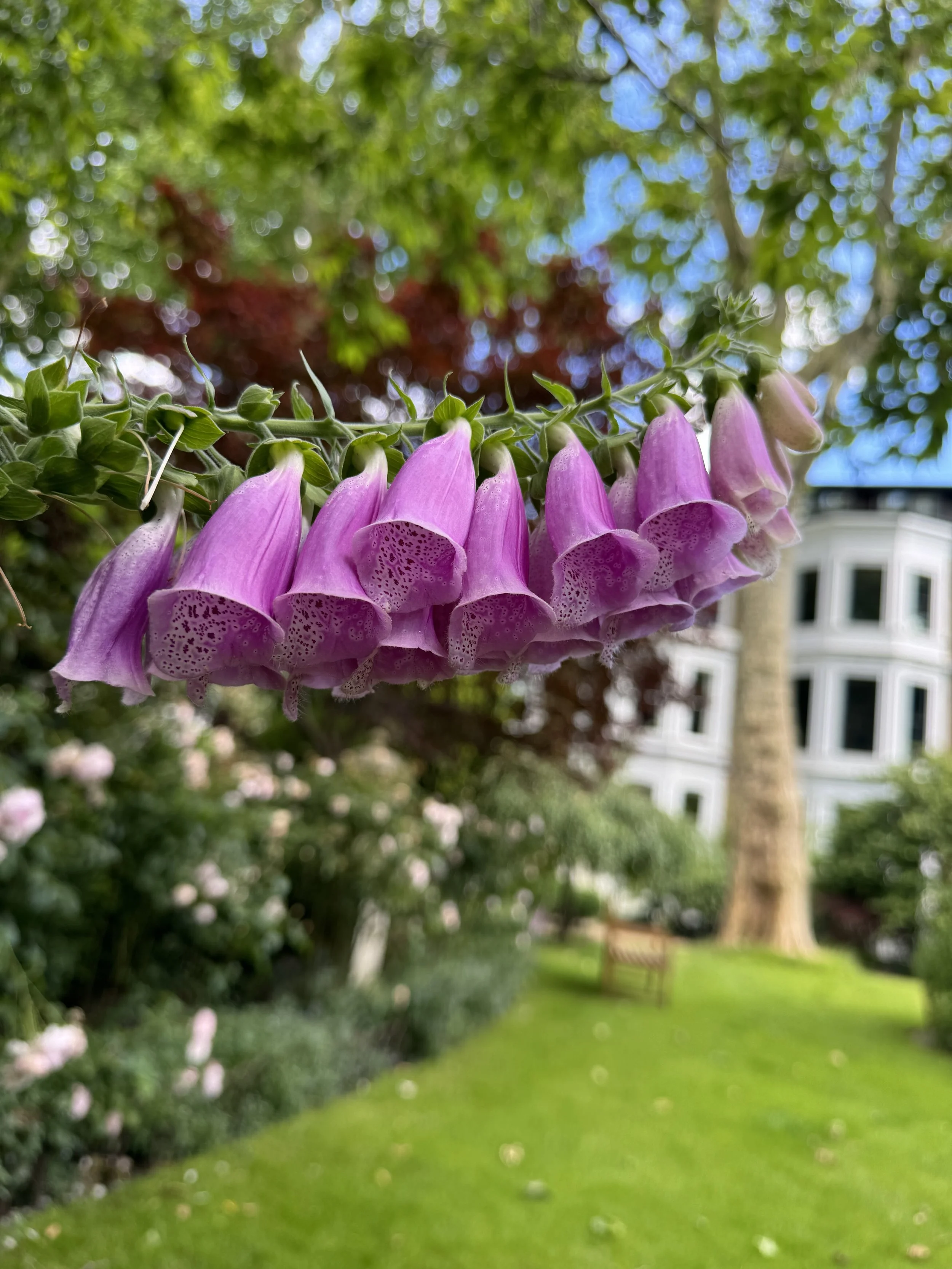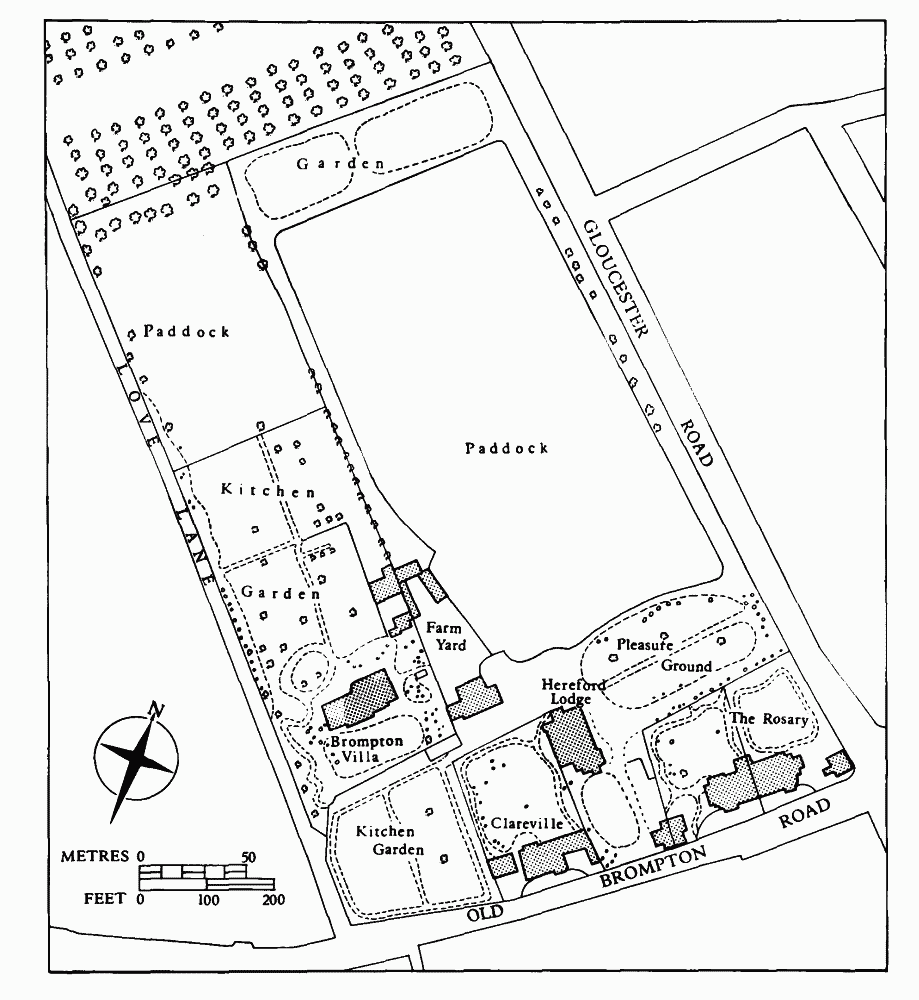Spotlight on: The Gardens Area of South Ken and Earl's Court, SW5
The residential enclave between Earl’s Court, South Kensington / Chelsea is a leafy and interesting mélange of cobbled mews, tree lined streets and communal gardens, where a progressive 19C gardener paved the way for some of London’s best garden squares…
The popular area of garden squares between Earls Court, South Kensington and Chelsea is a relatively unsung locale of prime real estate that sits in a former productive area of farmland and market gardens, once at the forefront of commercial gardening, largely owned and subsequently developed by the Gunter Estate.
This area also encompasses The Day Estate and the former Manor of Earl’s Court, an independent settlement and one of the oldest parts of Kensington with Manorial Rolls dating back to the 16th Century.
Bordered by Earls Court Road (W), Old Brompton Road (S), Cromwell Road (N) and Gloucester Road (E), this often under-appreciated slice of prime central London is renowned for its rich history, diverse architecture and vibrant community, and consists of an eclectic array of pretty streets and close-knit neighbourhoods, including Conservation Areas, together with sweeping Georgian crescents, and beautifully maintained communal (private) gardens that reflect its gardening heritage.
Adjoining the more obviously upmarket Kensington enclaves, this charming area offers a green oasis in the heart of the hustle and bustle and includes a network of hidden-away mews with leafy Victorian residential squares, yet you are only ever a few streets away from amenities, day time entertainment, a great night out, or excellent travel options to take you to busier parts of London and beyond.
The market gardens area of Earls Court began to be developed from the 1840s, with the majority taking place in the late 1860s-1890s, coinciding with the arrival of the railway. Most of the land was owned and developed by the Gunter family, who began to acquire the gardens in the early 1800s, when Robert Gunter, a much-written-about and progressive gardener was developing modern growing techniques. His commercial use and development of steam-heated greenhouses for growing fruit particularly attracted attention! The family sold part of their land (including Earl’s Court Farm) for the laying of the railway line and the construction of the first Earl’s Court Station. They then began to develop the gardens into residential housing, with most of the garden squares being built between 1865 and 1896.
Further development then followed in the 1930s with the construction of the Earls Court Exhibition Centre, giving rise to its reputation of an important crossroads, mix of residential and business, hotels and hostels, and landing point of many different nationalities and travellers from around the world. Much of this continues today, although the scruffier pockets have given way to new mixed-use developments and smart flats.
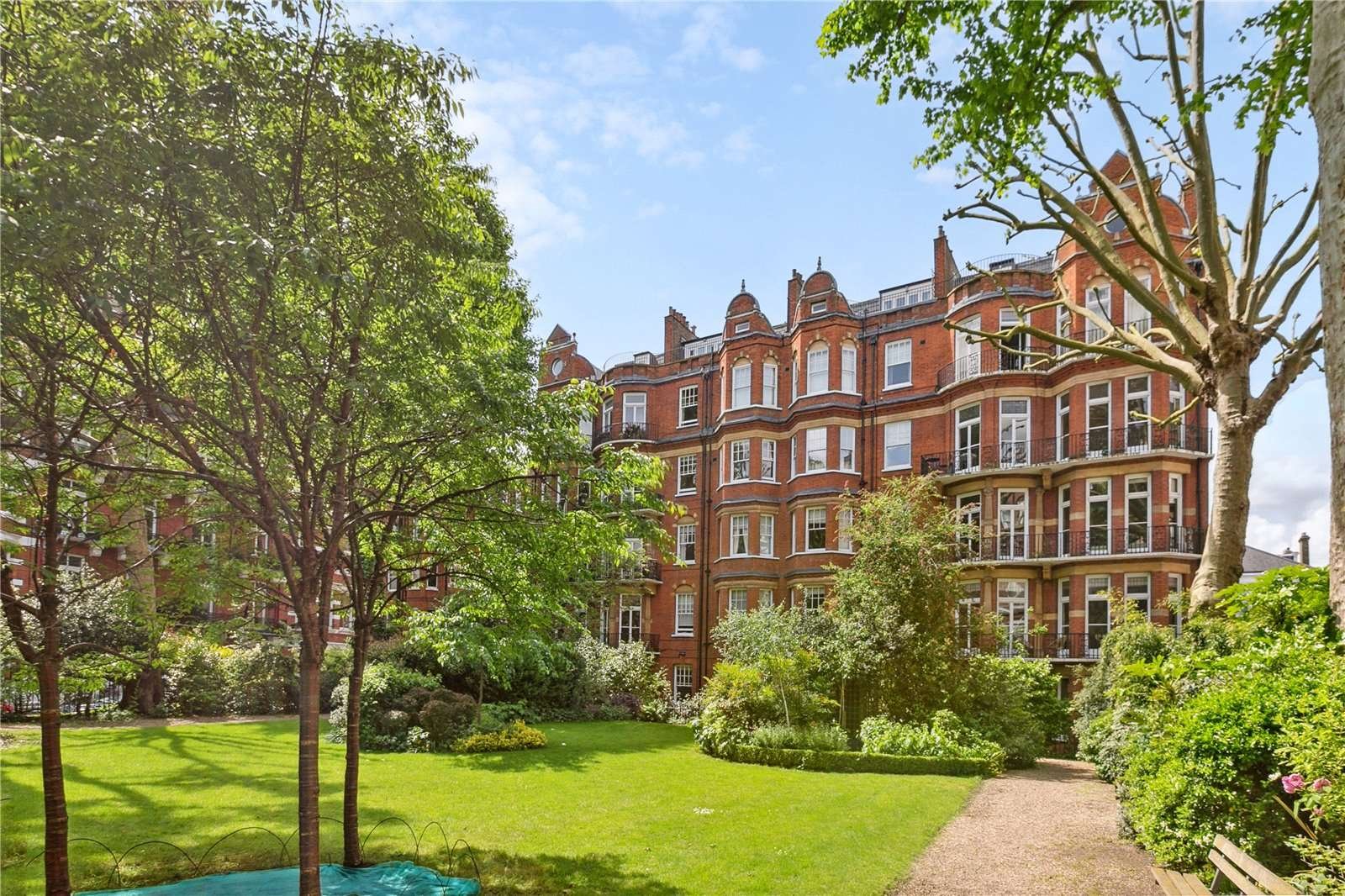
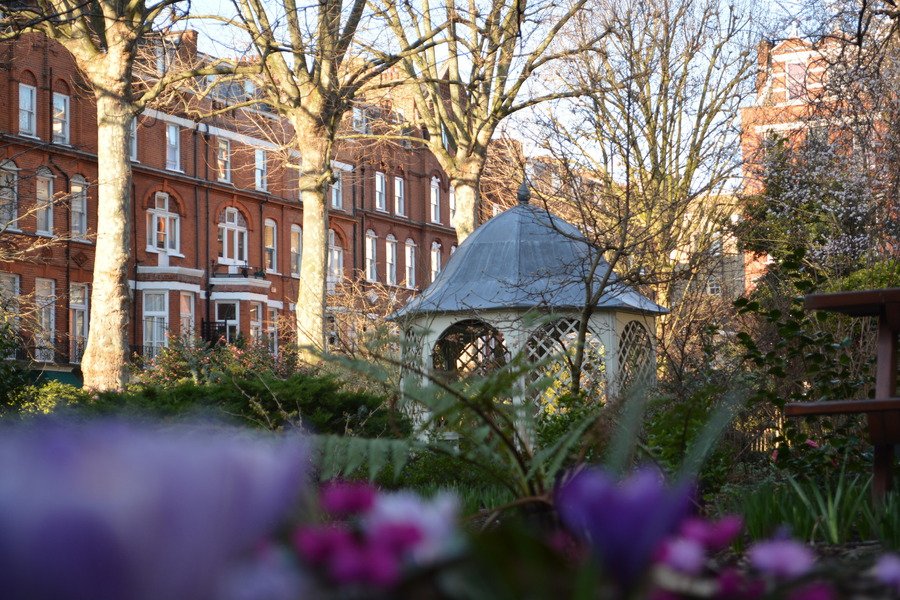
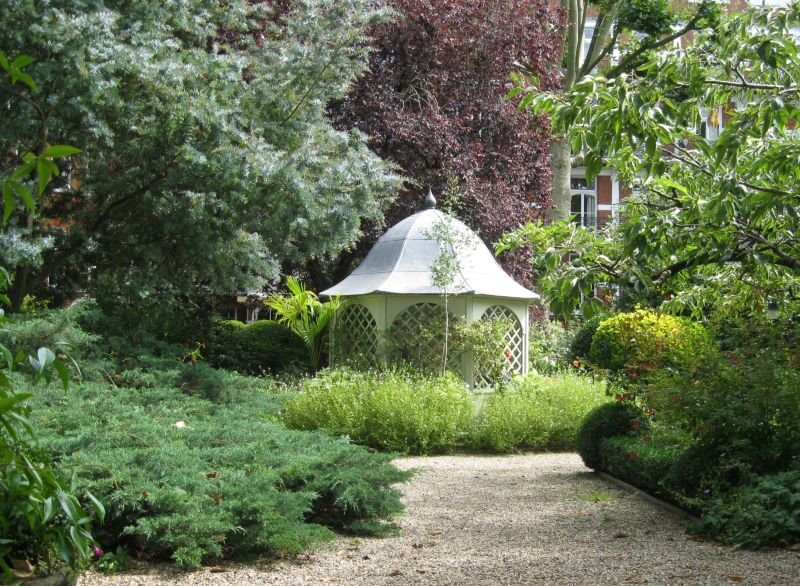

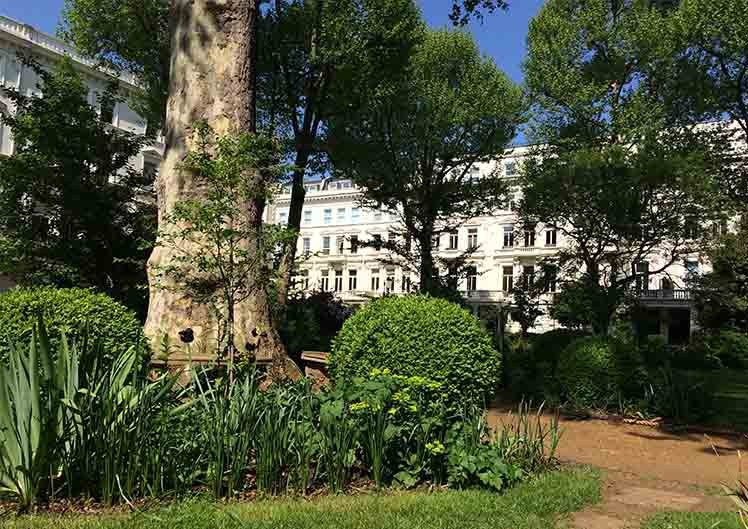
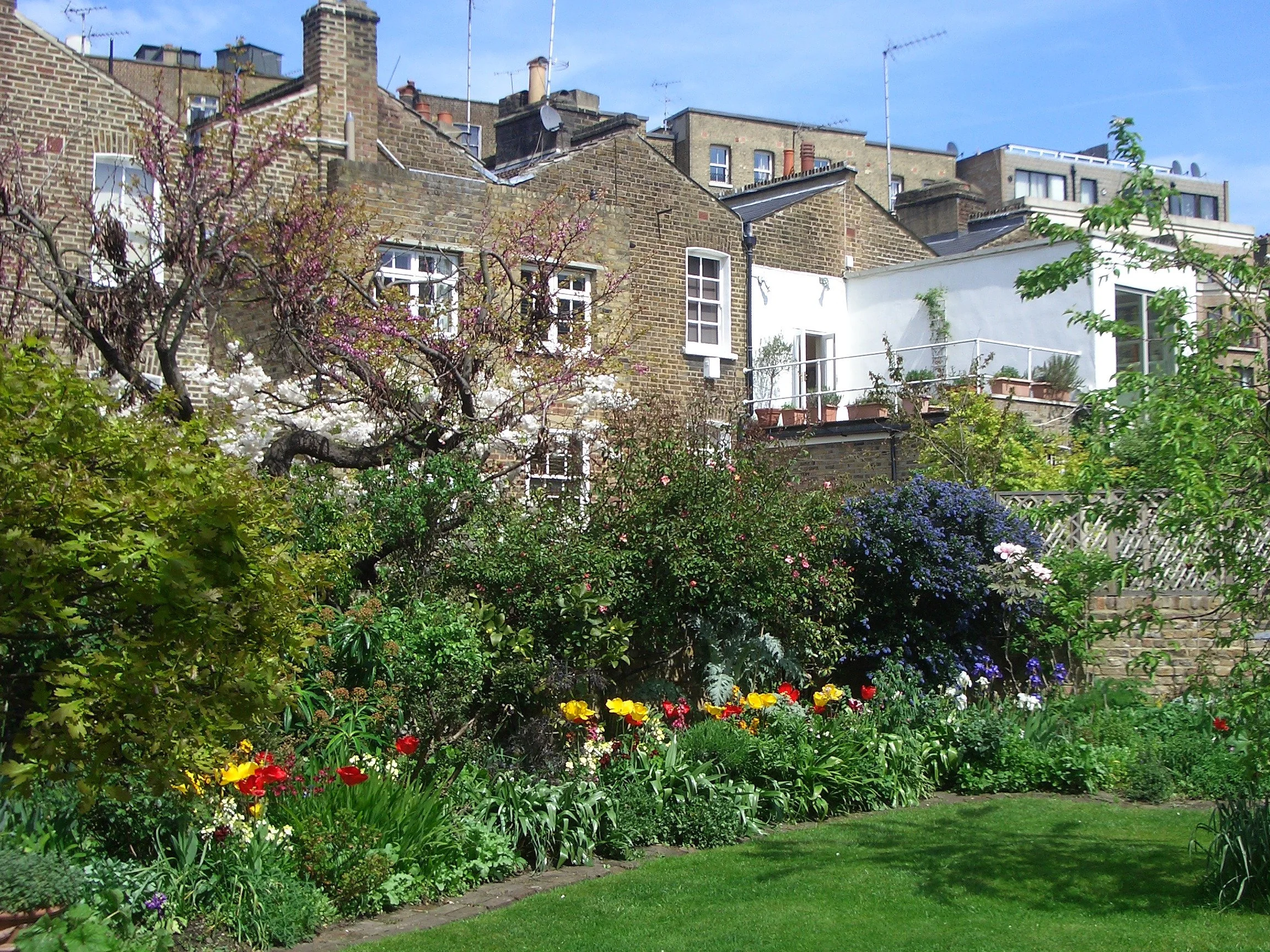
GARDENS
Now, a mixture of residential and business, this picturesque area is known for its beautiful street trees, front and rear gardens and contains some of London's best "gardens" and garden squares, including London's smallest communal garden, "Providence Patch", built on the site of former stables, as well as Earls Court Gardens, Wetherby Gardens, Barkston Gardens, Bina Gardens, Rosary Gardens, Gledhow Gardens, Harrington Gardens, Courtfield Gardens, Collingham, Ashburn and Bolton Gardens!
BARKSTON GARDENS - built in the 1880s, and once the site of Earl's Court House, a Georgian private family residence that survived until 1886. The gardens have been part of the Courtfield Conservation Area since 1985 and are surrounded by red brick period residential blocks along with several small hotels, just a short walk from Earl's Court Road and Gloucester Road. Two neat lawns are separated by a central gazebo and feature a ping-pong table and a dedicated children's play area, together with a variety of trees including an evergreen magnolia, several Japanese maples, an ornamental cherry tree and a Robinia 'Frisia'.
BINA GARDENS - Laid out in the 1880s as part of the Gunter Estate, the garden became wild and overgrown until it was rediscovered when it was purchased by Falkner House School for girls. The school cleared the site, revealing the original layout and it was then set out with planted areas dedicated to different continents. Nicknamed 'The Secret Garden', it is now privately owned and has been restored to its original design, and has a number of sculptures
BOLTON GARDENS - another gardens developed by the Gunter Estate - are the private communal gardens provided for residents of the houses that surround it and laid out with shrubberies, lawn, flower beds and trees.
COLLINGHAM GARDENS - ornamental gardens built in the 1880s. The original elaborate entrance gate is still in place, although the railings are modern. The gardens are laid out with lawn, mature trees, flowers and shrub beds and a network of paths.
COURTFIELD GARDENS - dating from 1873, they take their name from a meadow in the Earl’s Court Manor Estate – Court Fields – which was demolished when the underground was built. As well as the plane trees, there are rare ornamental trees, such as the wedding cake tree, a tobacco tree and some giant sequoias. The original railings were removed for the war effort and have now been reinstated.
GLEDHOW GARDENS - private communal gardens named after Gledhow Hall in Yorkshire, reflecting the Gunter family connections in the West Riding.
DEMOGRAPHICS
Once thought to be an area that was a little more down at heel than its smarter K&C neighbours (owing to the proliferation of international travellers and students and giving rise to nicknames such as “Danzig Corridor” and “Kangaroo Valley), the gardens area of Earls Court has been greatly improved over recent years. These days, this area's blend of historical charm, architectural elegance and modern amenities positions large hotels by small hostels, family homes by High Commissions, upmarket bars and restaurants by old-school pubs like the Duke of Clarence.
Its lively, vibrant and upmarket ambiance makes it a much sought-after area of Kensington, particularly popular with younger professionals and families, as well as expats.
NOTABLE FORMER RESIDENTS
Edwin Arnold (1832–1904), English poet and journalist, lived at 31 Bolton Gardens.[20]
WS Gilbert (1838–1911), English dramatist and librettist, poet and illustrator, one of the two authors of the Savoy operas, lived in Harrington Gardens.
Dame Ellen Terry (1847–1928), leading Shakespearian stage actress in Britain in the 1880s and 1890s, lived at 22 Barkston Gardens.
Edmund Allenby, 1st Viscount Allenby (1861–1936), British soldier and administrator famous for his role during the First World War when he led the Egyptian Expeditionary Force in the conquest of Palestine and Syria, lived at 24 Wetherby Gardens.
Beatrix Potter (1866–1943), English naturalist, children's author, grew up in Old Brompton Road. Hers is not a blue plaque, but a multicoloured plaque on the wall of Bousfield Primary School, near the spot where her house stood before it was bombed in the Second World War.
Howard Carter (1874–1939), English archaeologist, Egyptologist and primary discoverer of the tomb of Tutankhamun, lived at 19 Collingham Gardens.
Sir William Orpen (1878–1931), Irish portrait painter, lived at 8 South Bolton Gardens.
Alfred Hitchcock (1899–1980), English filmmaker and producer, lived at 153 Cromwell Road.
Benjamin Britten (1913–1976), English composer, conductor, violist and pianist, lived at 173 Cromwell Road.
Willie Rushton (1937–1996), English satirist, cartoonist, co-founder of Private Eye, and much else, lived in Wallgrave Road.
TRANSPORT LINKS
The area is well-served by public transport, with Earls Court Underground Station providing access to the District and Piccadilly lines. Several bus routes also operate in the vicinity, enhancing connectivity to other parts of London.
SCHOOLS & EDUCATION
The area itself has Collingham Sixth Form college, St Phillips, Wetherby Primary School and Faulkner House Girls School. It is also close by to the Lycée Français, Bousfield Primary School, and Redcliffe School, making it a most desirable location for families.
We are always looking for properties in this popular area and have recently achieved some great success with a number of homes in Wetherby Gardens, Bina Gardens and Drayton Gardens. Please give us a call if you have property to sell or are looking for a home in this area.

